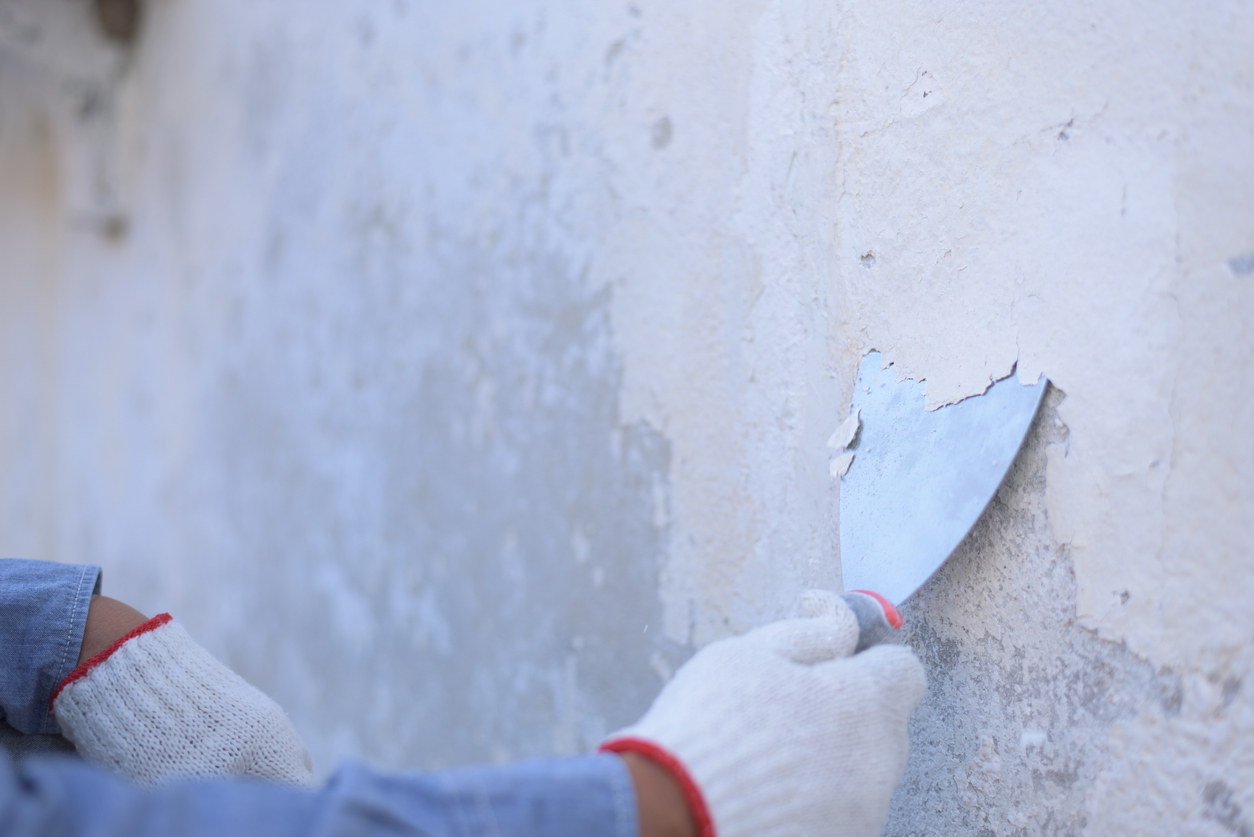Painting your Tracy area house or business can be laborious, so to save your energy, time, and sanity, hire professional painters to do the job. With their help, the painting process can be simpler on your part. However, there is still some prep work to do in advance, so beginning the process becomes hassle-free for both you and the painters.
While you’re discussing your painting project, discuss prep tasks you can do. Learning how to prepare your home or commercial property for painting can make a difference. Also make sure you factor in tasks for San Ramon area homes like acoustic ceiling removal, wood rot repair, light carpentry tasks and more. You will not only contribute to the project but also save some money.
Preparing for interior painting
1. Remove smaller objects and store them
Start by removing any smaller items in your area, such as wall decor, window blinds, knickknacks, and other loose items indoors. Store them all in a safe place. Doing so will reduce the chances of these objects getting damaged or lost while your house is painted. If you have many items, you can take a photo and return them to the same place after the job is complete.
2. Move larger objects out or to the center of the room
Move all the furniture away from the walls so the professionals can easily paint the entire wall. If you can move them to the garage, that’s great, but if you can’t, moving them to the center of the room will be fine. Make sure to give room for the painters in the areas near the wall. Do not place the furniture in the hallways or passages to prevent obstructions and physical damage.
Then, cover the furniture with drop cloths, plastic sheeting, or some old sheets to protect them from paint and sanding dust. If you can’t move your own furniture, painting companies can assist. Some painting companies may charge a small extra fee for this service.
3. Remove wall hangings and ornaments
Take down all pictures, mirrors, wall clocks, and other hangings. To protect them, wrap them in bubble wrap or place them in a safe area away from the work zone. If you plan to keep them in the exact location on the wall, leave the hardware in place.
4. Remove the outlet and light switch covers and unplug the electronics
Unscrew any outlet and light switch covers and store them in a safe place. Many professional painters usually don’t cut in around these, resulting in visible brush strokes and smudges. You may also use child-proof plastic covers or painter’s tape to cover the outlet fully. Unplug electronics, but if you have some that need to remain plugged in, alert the painting crew.
5. Protect certain areas from paint
Tape around doors, windows, and baseboards with painter’s tape. If you don’t want the ceiling to be painted, tape the edges of the ceiling right where the wall and the ceiling meet.
6. Ask about masking
It’s good to ask about how thoroughly they plan to mask your space, especially if they’re going to spray paint. Ideally, you want a lot of protective plastic used, even if it seems excessive. This extra covering helps catch any paint dust and makes cleaning up much easier. Also, make sure to use masking tape on places like baseboards and window sills to avoid unwanted paint marks. Take ample time to cover all the important areas.
It’s always good to lay down drop cloths to protect your floors from excess paint drips and sanding dust. But painters will have them on hand, so you probably don’t need to worry about this.
7. Clean the walls
Clean your walls by simply dusting them with a damp cloth or sponge, then allow the walls to dry. It would help if you did this a day before your painter arrives. A good crew will wipe down the walls to remove dust and debris, but not all do that. It’s better to do the wiping yourself so the painters can focus on the job they are hired to do.
8. Vacate the area
You might need to stay out of your home or just some rooms while they’re being painted. Make sure to grab anything you’ll need during this time, as it might be hard to get to later. Also, keep kids and pets out of the work area to avoid accidents with tools or paint. If your whole house is getting a fresh coat, staying somewhere else, like a hotel or a relative’s house, could be a good idea.
Preparing the exterior for painting
Unlike interior painting, you may not have to leave your house or commercial property during exterior painting. Prepping the exterior surfaces yourself should be manageable if you own a small or medium-sized business, such as a cafe or a boutique. The information below pertains both to houses and businesses.
1. Move away planters and other items
If you have movable planters and other items resting beside your walls, move them away and keep them in another place.
2. Wash the walls
Wash the home’s entire exterior to be sure it is free of dust, dirt, soot, and residue so that the paint will adhere properly. If your budget allows it, rent a power washer or hire a power washing service. Custom Painting, Inc. can do this task for you, so be sure to discuss it with them. After washing, let the walls dry.
3. Scrape off loose paint
Once the walls are dry, inspect them for any loose old paint. If you find any, scrape it away with a paint scraper or putty knife.
4. Make any necessary repairs
After all the loose paint has been removed, look for areas that may need repairs, such as cracks, holes, or dents in wood or stucco. Then, take any necessary steps to repair them.
5. Sand
Sand off old paint to make the surfaces more even for the paint to stick to.
6. Caulk
Fill any gaps or cracks between the walls and door or window trim with exterior caulk. Here is what to do if the two surfaces are made of different materials, like brick on one side and siding on the other. Caulk along the juncture to ensure protection against the outside elements.
7. Protect the areas you don’t want to be painted
After everything dries, tape the areas you do not want to paint, including door and window trim, to protect them against paint drips and seepage.
8. Lay down drop cloths
Putting down drop cloths will help prevent excess paint drips from finding their way onto shrubs, lawns, or deck floors.
9. Use primer
This step is not always required in interior or exterior paint jobs. But there are cases where a primer is needed, such as painting a light color over a dark one or new sheetrock. If you are unsure if you need primer, talk to an expert for painting in the Bay Area.
Final Word
When it’s time to give the exterior or interior of your Pleasanton area property a fresh coat of paint, call Custom Painting, Inc. for help. We offer ideal solutions for every painting project and will finish the job right on the first go. Call us today at 925-294-8062 or fill out our contact form for a free estimate for your painting project!



